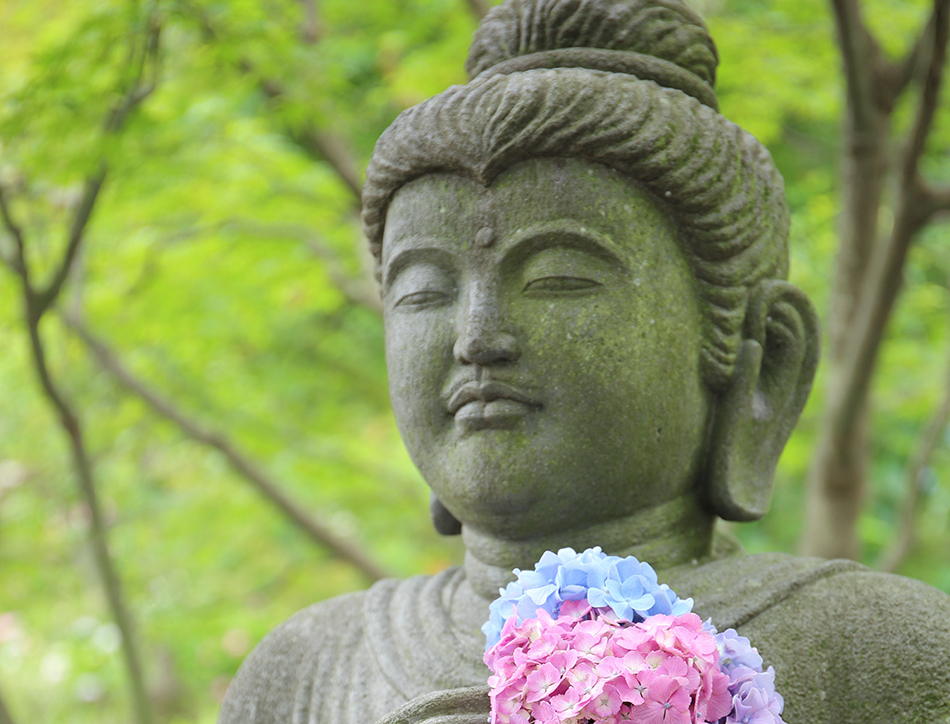Do you want to meditate like the Buddha?
First, let’s imagine what it was like to be him. You are sitting quietly at dusk under the boddhi tree, enjoying the pure peace of being. Nothing is wrong. Everything is right. The silence and stillness is so deep you can hear the bells of a temple drifting over the soft breeze from miles away. A feeling of peace and perfection fills the buzzing twilight air. There is nowhere to go and nothing to do. The whole universe feels alive, close, vivid, and awake. You don’t need or want anything at all.
Can you imagine that kind of deep joy and contentment—resting in the infinite buddha mind? For me, this is what meditation is all about.
So what’s the catch?
First, you don’t need to be the Buddha to develop a meditation practice that gives you access to limitless inner peace and freedom. However, there is a reason why so many people know about the benefits of meditation, but so few follow through.
To put it simply, meditation isn’t easy. It takes commitment, perseverance, and a lot of practice. To enjoy the peace that Buddha found in himself, we have do some inner work. In general, the kind of work I’m talking about isn’t so popular.
But, let me tell you, from my own experience, it’s totally worth it! Over time, the effort you invest to create a strong meditation practice—even if it’s for just 15 minutes a day—will give you access to a part of yourself that is always free and at peace.
10 Meditation Tips (And a bonus! Read on…)
So I want to share 10 meditation tips that will help you build your practice. Each one of these plays an important role in my own daily practice.
- Trust your intention
- Select a space to practice
- Choose a consistent time
- Get the right equipment
- Select a specific practice that works for you
- Make a commitment
- Don’t give up
- Be interested and Experiment!
- Spend time with other meditators
- Don’t take your practice for granted
1. Trust your intention
I can’t underscore enough the power of your intention. You are reading this post because you want to meditate and you want to take your practice to a new level. I encourage you to trust the impulse that is driving you and never look back. That urge is stronger than any of us can ever imagine. If we are to believe many modern mystics and sages, that impulse is part of the universal march of evolution. Trust your intention and never doubt. I can tell you from my own first hand experience, if you trust your intention completely, you will find the peace and freedom you seek.
2. Select a space to practice
First, find a place that’s quiet. Try and meditate in the same place every day. Make it beautiful. You may want to create a small alter and light a candle or put a flower there. This is Your space to meditate, and you want it to reflect your special intention. Designing this dedicated space will support your practice more than you know. Like your own little temple, church, mosque or dojo, it will start to have it’s own energy and a quality of stillness and silence you can return to.
3. Choose a consistent time
Try to meditate at the same time each day. Protect that time and draw a line around it. As you develop consistency, it will become a habit. Like your first cup of tea or coffee in the morning, it will become part of the natural rhythm of your day and you won’t have to think about it or negotiate with yourself. This is how you start to create the conditions for your success in meditation.
4. Get the right equipment
Make sure that you have a cushion, pillow, or chair that you feel comfortable sitting on. You need something that is going to allow you to be awake and relaxed, preferably with a straight spine. I sit cross-legged on a round zafu each morning. That’s what works for me. Once you find the right equipment, stick with it. You want as few distractions as possible, so find something that really works from the beginning.
5. Select a specific practice that works for you
There are lots of different kinds of meditation practices – mantra, breath, visualization, chakra. These meditations focus on something. Then there is the kind of meditation like Zen or Advaita Vedanta, where you just pay attention to awareness itself and let everything be as it is. All of these are valid. Some are harder than others. For now, find one that you are comfortable with. You may need to test a few to find out what works. Once you find the practice that’s right for you, give everything to that practice and make it your own.
6. Make a commitment
You have decided to meditate, and you are serious about it. The most powerful tool at your disposal is your intention to follow through on this decision. Make a commitment to yourself that you can stick to. It’s fine if you need to take breaks or if you miss a day here or there. More importantly, you want to keep a big picture view of your practice so that you can see steady improvement over the long term. Don’t get lost in the details of your daily practice—in the quality or quantity. Just stay focused on the big picture. For big results, you need to honor this commitment. For that, you need a big view and a big heart.
7. Don’t give up
In addition to peace and ease and contentment, you are going to experience doubt, resistance, inertia and many thoughts and feelings that don’t support your desire to meditate. Don’t worry about it. It’s all part of the process. The number one rule is to keep going. Ignore the hype in your head. Expect unpleasant experiences. It’s not a problem, even though it feels like one. Remember…Big Picture! Let it happen and let it go. Try not to draw any conclusions at all about your progress from any single experience, good or bad. Stick with it and don’t give up.
8. Be interested and experiment often
Ask questions and be curious. Talk about your experiences with friends. When you are following your meditation instructions, allow yourself the flexibility to experiment. I have made the biggest strides in my practice through stepping outside the rules and connecting new dots for myself. How does meditation relate to life? How does my desire for peace and freedom relate to experiences of psychological pain and contraction?
Meditation can be transformative, but you have to be interested and engaged. You can’t be passive. Being interested activates a different part of me than the one that follows the rules and performs the practice. We need both parts for a flourishing practice.
9. Spend time with other meditators
We all need to talk with peers about our experiences. It helps build confidence while opening our minds and hearts. Most importantly, it reinforces the value of meditation when we talk with other people who share our interest in meditation. Often, a friend with a strong intention can ignite your own practice with a few inspired words and help to spark a new insight. Friendship on the path is important.
10. Don’t take your practice for granted
A stable meditation practice is a precious resource. It is also a like a plant that needs to be watered. Your practice will give back to you in measure to what you give. If you invest your time, energy, and commitment, you will see returns. If you don’t invest, your meditation won’t grow or yield the benefits you want. If you don’t take it for granted, and you nurture it with care, it will grow and bear fruit for you.
11. Bonus Tip: Your confidence is everything
In meditation, we ultimately discover that peace, freedom, and joy are not just experiences—they are the natural qualities of who we are at our core. As your practice develops, you will gain confidence in this limitless part of yourself. As your confidence develops, the part of you that is always at ease will grow stronger, and you will have spontaneous access to meditation. Why? Because that is who you are, and you no longer need any person or experience to prove that to you.
Perhaps the greatest gift I have received from meditation is this: an essential conviction that life is good beyond measure. I wouldn’t trade that confidence for anything. I hope these meditation tips help you develop a powerful practice that builds your own faith in the infinite positivity of life and being.




I just recently started practicing meditation, I have a holistic healer friend who has been doing it for many many years. He just recently aligned my chakras and set two anchor points.
Latly it is all about my temple, send any information, newsletters etc my way.
Thank you and Namaste
Ty
Thanks for your response Ty and it sounds like your practice is off to an auspicious start. Keep us posted.